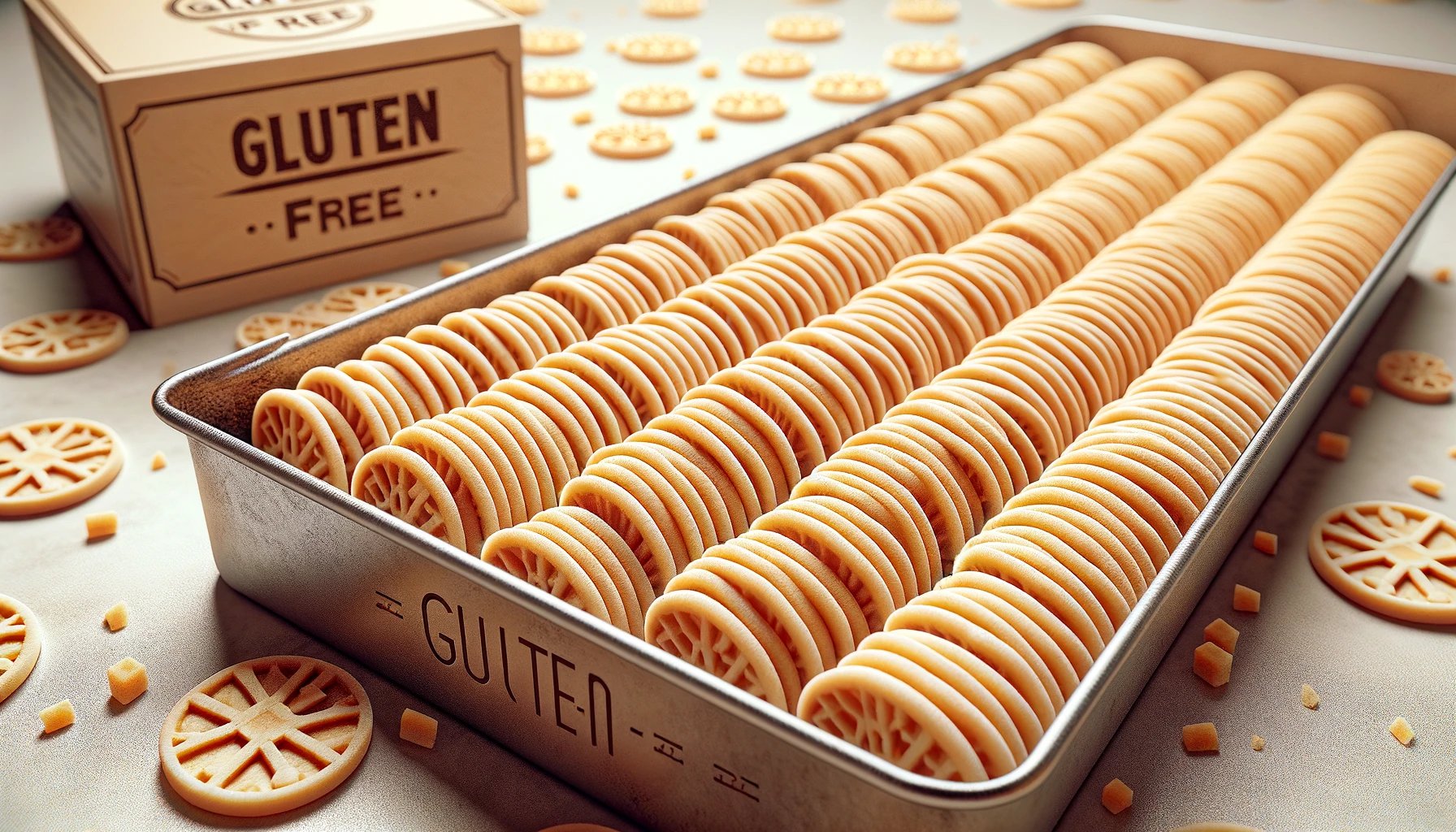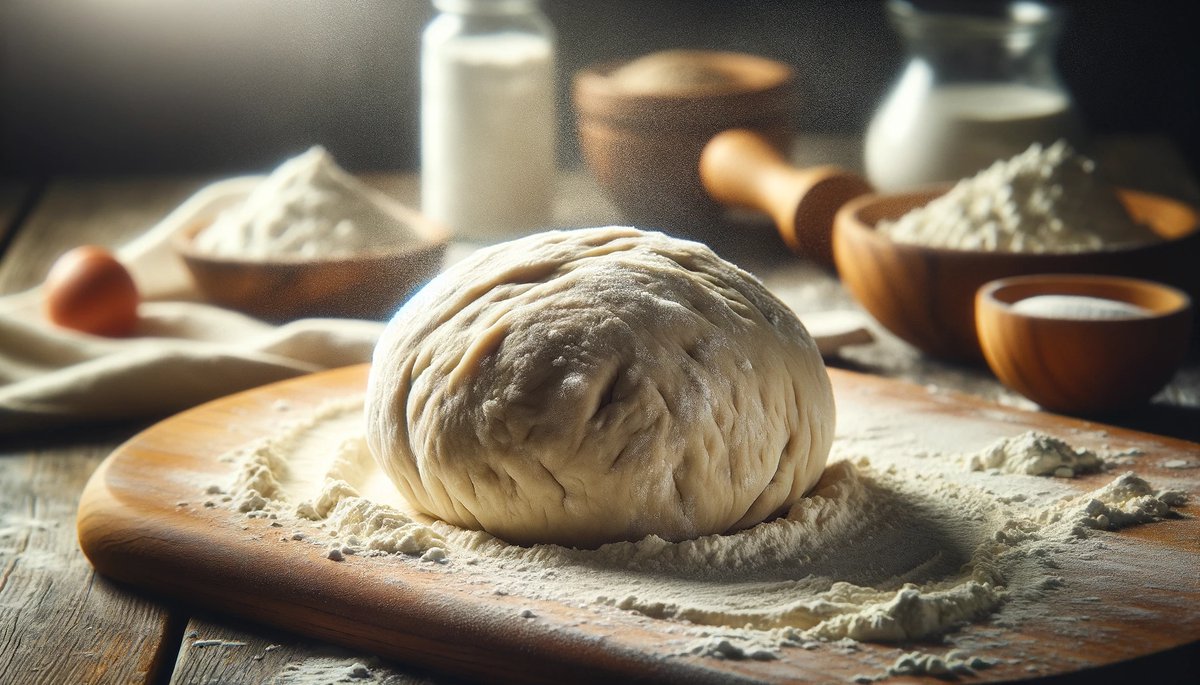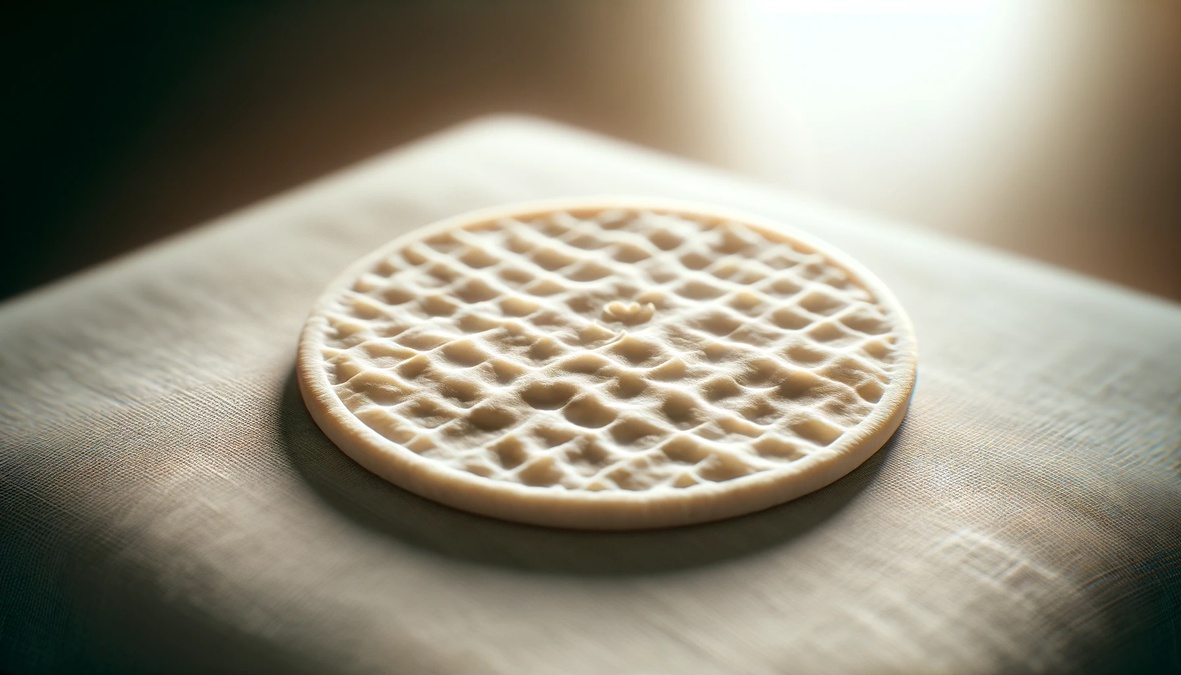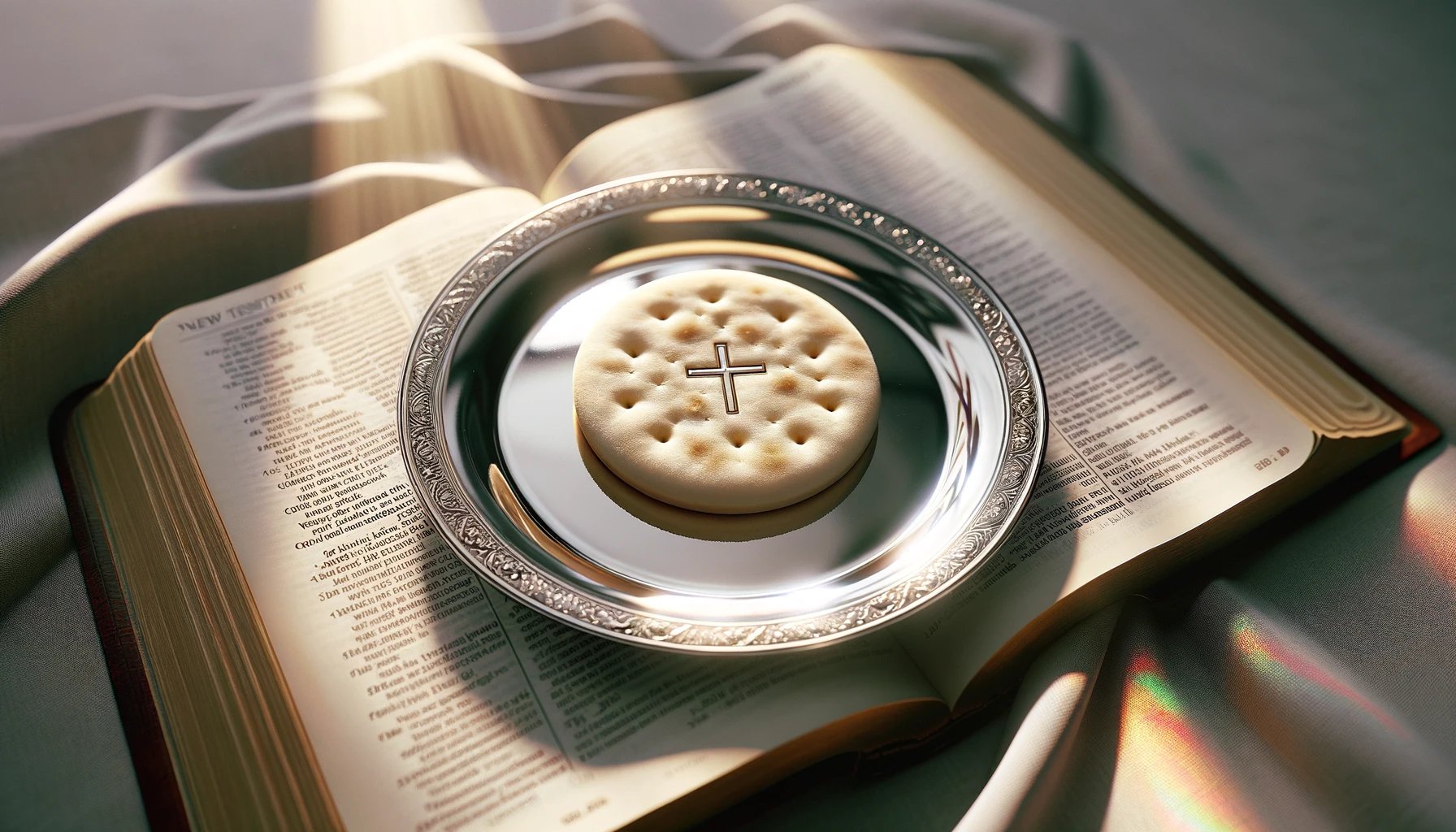Home>Theology and Spirituality>How To Make A Communion Wafer
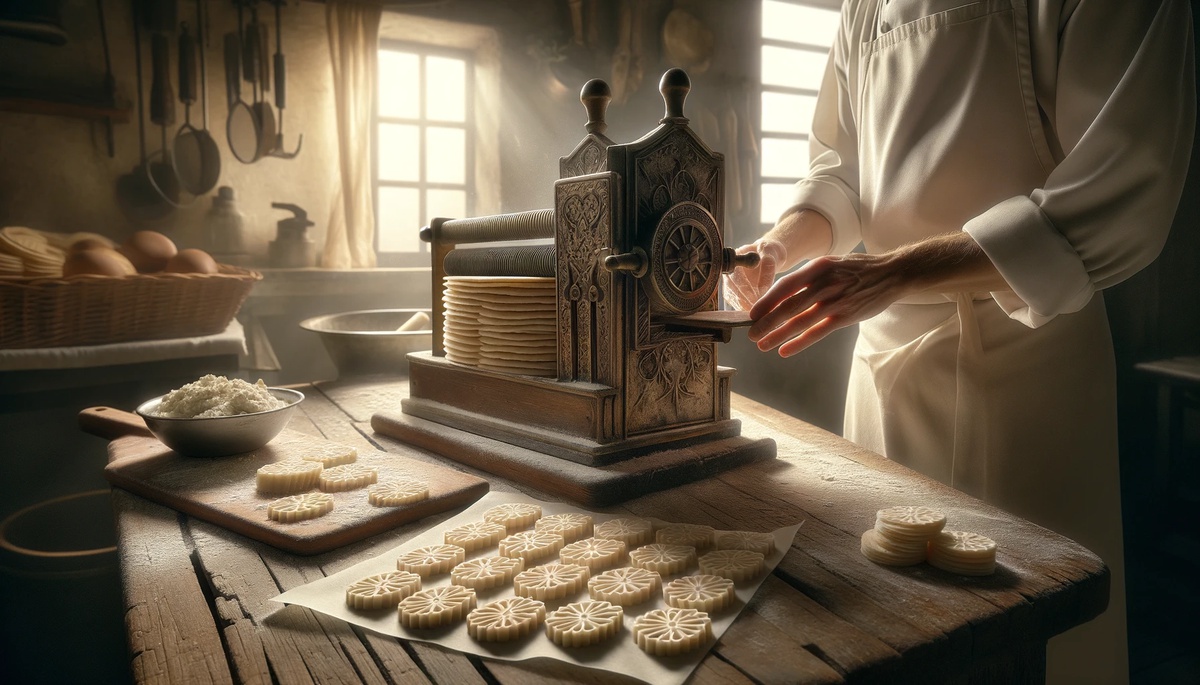

Theology and Spirituality
How To Make A Communion Wafer
Published: February 24, 2024
Jason DeRose, Managing Editor at Christian.net, uses his expertise in religion and journalism to deepen understanding of faith's societal impacts. His editorial leadership, coupled with a strong academic background, enriches the platform’s diverse content, earning him recognition in both journalism and religious circles.
Learn how to make a Communion wafer at home with our step-by-step guide. Explore the spiritual significance and traditional practices in theology and spirituality.
(Many of the links in this article redirect to a specific reviewed product. Your purchase of these products through affiliate links helps to generate commission for Christian.net, at no extra cost. Learn more)
Table of Contents
Introduction
Making a communion wafer is a sacred and time-honored tradition in many Christian denominations. These thin, unleavened wafers hold deep spiritual significance, symbolizing the body of Christ in the Eucharist. Crafting these wafers is a meticulous process that requires care, reverence, and attention to detail. Whether you are a member of the clergy, a church volunteer, or simply curious about the art of communion wafer preparation, this guide will walk you through the steps of creating these essential elements of the Christian faith.
The act of making communion wafers is steeped in centuries of religious tradition and symbolism. As you embark on this journey, it's important to approach the process with a sense of reverence and mindfulness. Each step in the preparation of these wafers is infused with spiritual significance, serving as a tangible expression of faith and devotion.
Throughout this guide, we will explore the ingredients and equipment needed for crafting communion wafers, the precise method of mixing the dough, the art of rolling and cutting the wafers, the delicate process of baking them to perfection, and the best practices for storing these sacred elements. By following these steps with care and respect, you can contribute to a time-honored tradition that holds profound meaning for countless individuals around the world.
As we delve into the intricacies of making communion wafers, it's essential to approach this practice with a spirit of reverence and humility. The act of creating these wafers is not merely a culinary endeavor; it is a sacred ritual that connects individuals to the heart of their faith. With each step in the process, we honor the profound significance of the Eucharist and the central role that communion wafers play in the spiritual lives of believers.
In the following sections, we will explore the art and craft of making communion wafers, delving into the precise techniques and spiritual significance that underpin this time-honored practice. Whether you are a seasoned church volunteer or someone seeking to deepen their understanding of religious traditions, this guide will provide a comprehensive and insightful exploration of the profound art of communion wafer preparation.
Read more: Who Makes The Communion Wafers
Ingredients and Equipment
Crafting communion wafers requires a precise selection of ingredients and specialized equipment to ensure the creation of thin, unleavened wafers that adhere to the sacred traditions of the Eucharist. The following are the essential components and tools needed for this revered process:
Ingredients
-
Flour: The foundation of communion wafers, high-quality flour is essential for achieving the desired texture and consistency. Unbleached white flour is commonly used, as it produces wafers with a delicate, uniform appearance.
-
Water: Pure, clean water is crucial for creating the dough that will be transformed into communion wafers. The precise measurement and temperature of the water are key factors in achieving the ideal dough consistency.
-
Salt: A small amount of salt is often added to the flour to enhance the flavor of the wafers. While the quantity used is minimal, it plays a significant role in balancing the overall taste of the wafers.
Equipment
-
Mixing Bowl: A large, sturdy mixing bowl is essential for combining the flour, water, and salt to create the dough. The bowl should be meticulously clean to maintain the purity of the ingredients.
-
Mixing Utensil: A wooden spoon or spatula is typically used to blend the ingredients and form the dough. The utensil should be smooth and free of any residual flavors or odors.
-
Rolling Pin: A long, smooth rolling pin is indispensable for flattening the dough to the desired thinness. The rolling pin should be meticulously cleaned before use to prevent any contamination of the wafers.
-
Baking Sheets: Large, flat baking sheets are used to bake the wafers in the oven. These sheets should be unblemished and dedicated solely to the purpose of crafting communion wafers.
-
Oven: A reliable oven with precise temperature control is essential for baking the wafers to perfection. The oven should be preheated to the exact temperature specified in the recipe to ensure consistent results.
By meticulously selecting the finest ingredients and maintaining the purity of the equipment, the process of crafting communion wafers begins with a foundation of reverence and attention to detail. These elements form the cornerstone of a time-honored tradition that holds profound spiritual significance for countless individuals.
Mixing the Dough
The process of mixing the dough for communion wafers is a pivotal stage that demands precision, care, and a deep sense of reverence. This sacred act begins with the meticulous blending of flour, water, and salt, transforming these humble ingredients into a substance that will embody the spiritual essence of the Eucharist.
In a large, immaculately clean mixing bowl, the flour is carefully measured and gently sifted to ensure a fine, uniform texture. This step is crucial, as it sets the foundation for the consistency of the dough. The addition of a small quantity of salt follows, delicately balancing the flavors that will permeate the wafers.
With a spirit of mindfulness and devotion, pure, clean water is then added to the flour and salt, gradually forming a cohesive mixture. The water must be precisely measured and at the optimal temperature, as this will profoundly influence the texture and workability of the dough. As the ingredients coalesce, a wooden spoon or spatula is employed to blend them with deliberate, unhurried motions, infusing the dough with the care and reverence befitting its sacred purpose.
Throughout this process, the significance of each movement is palpable, as the dough begins to take shape under the gentle guidance of the mixing utensil. Every motion is imbued with intention, reflecting the profound spiritual connection that underpins the creation of these wafers.
As the flour, water, and salt harmonize, a cohesive dough emerges, embodying the culmination of meticulous preparation and unwavering devotion. This transformative stage sets the foundation for the subsequent steps in crafting the communion wafers, laying the groundwork for the profound symbolism and spiritual significance that these wafers hold for the faithful.
The act of mixing the dough for communion wafers transcends mere culinary preparation; it is a sacred ritual that bridges the material and the spiritual, infusing each wafer with the essence of faith and devotion. With the dough now formed, the journey continues, guiding these humble elements toward their transcendent purpose in the sacred rite of the Eucharist.
Read more: What Is Communion Wafer
Rolling and Cutting the Wafers
The art of rolling and cutting the communion wafers represents a pivotal stage in the sacred process, where the pliable dough is transformed into delicate, uniform wafers that will embody the spiritual essence of the Eucharist. This transformative act demands precision, patience, and a profound sense of reverence, as each movement carries the weight of centuries-old tradition and spiritual significance.
With the dough meticulously prepared, the next step in crafting communion wafers involves the delicate art of rolling. A clean, smooth surface is essential for this stage, as it provides the ideal canvas for shaping the dough into thin, consistent wafers. The rolling pin, a venerable tool in this timeless ritual, is employed with deliberate, unhurried motions, gently flattening the dough to achieve the desired thinness. Each pass of the rolling pin is executed with care and mindfulness, ensuring that the wafers will possess the ethereal quality befitting their sacred purpose.
As the dough yields to the gentle pressure of the rolling pin, it gradually assumes the ethereal translucency that characterizes communion wafers. This process demands unwavering attention to detail, as the thickness of the wafers must adhere to precise standards, reflecting the reverence and precision inherent in the Eucharistic tradition. With each delicate stroke of the rolling pin, the dough is transformed, embodying the profound spiritual significance that these wafers hold for the faithful.
Following the meticulous rolling process, the dough is ready to be transformed into individual wafers through the art of cutting. A circular cutter, often used for this purpose, ensures that the wafers are uniform in size and shape, embodying a sense of harmony and consistency that mirrors the spiritual unity they symbolize. Each press of the cutter against the thin, translucent dough yields a perfect circle, evoking a sense of reverence and devotion that transcends the material realm.
As the communion wafers take shape, each one a testament to the meticulous care and spiritual significance infused into their creation, the timeless ritual of rolling and cutting reaches its culmination. These delicate wafers, imbued with centuries of tradition and spiritual symbolism, stand as a testament to the profound connection between the material and the divine, embodying the essence of faith and devotion that permeates the sacred rite of the Eucharist.
Baking the Wafers
The transformative journey of crafting communion wafers reaches a pivotal stage as the meticulously prepared dough is ushered into the sanctifying heat of the oven. Baking the wafers is a sacred act that represents the culmination of meticulous preparation, unwavering devotion, and the profound spiritual significance that underpins the Eucharistic tradition.
As the oven, a vessel of transformation, reaches the precise temperature specified in the time-honored recipe, the stage is set for the alchemical process that will imbue the wafers with the ethereal essence of the Eucharist. The baking sheets, pristine and dedicated solely to this sacred purpose, stand as a testament to the purity and reverence that infuse every aspect of this timeless ritual.
With deliberate care, the thin, translucent wafers are placed into the radiant embrace of the oven, where they undergo a metamorphosis that transcends the material realm. As the heat envelops the wafers, a profound alchemy unfolds, infusing them with a delicate crispness and ethereal translucency that mirrors the spiritual significance they embody.
Throughout the baking process, a sense of anticipation and reverence permeates the air, as the wafers undergo a sacred transformation. The sanctifying heat of the oven, a crucible of spiritual significance, imbues the wafers with a subtle golden hue, symbolizing the sanctity and purity of the Eucharist.
As the wafers emerge from the oven, imbued with a delicate crispness and a transcendent translucency, they stand as a testament to the profound spiritual connection that underpins their creation. Each wafer, bearing the imprint of centuries-old tradition and unwavering devotion, embodies the essence of faith and reverence that permeates the sacred rite of the Eucharist.
The act of baking the wafers transcends mere culinary preparation; it is a sacred ritual that bridges the material and the spiritual, infusing each wafer with the essence of faith and devotion. With the wafers now imbued with the transformative power of the oven, they stand as a testament to the profound spiritual significance that underpins the Eucharistic tradition.
Storing the Wafers
After the profound journey of crafting communion wafers, the final act of preserving their sacred essence through proper storage is essential to uphold their spiritual significance. Once the wafers have been baked to perfection and imbued with the ethereal essence of the Eucharist, meticulous care must be taken to ensure that they retain their delicate texture and spiritual symbolism.
Upon emerging from the sanctifying heat of the oven, the communion wafers exude a subtle golden hue, embodying the sanctity and purity of the Eucharist. It is imperative to allow the wafers to cool completely before initiating the storage process, as their delicate crispness and ethereal translucency must be preserved with utmost reverence.
The cooled wafers are carefully gathered and placed in a dedicated vessel of sacred significance, such as a chalice or a specially crafted container designed for the purpose of preserving communion wafers. This vessel, meticulously maintained and consecrated for this sacred duty, serves as a guardian of the wafers' spiritual essence, safeguarding them from impurities and preserving their transcendent nature.
In the act of storing the wafers, a spirit of reverence and mindfulness permeates the process, reflecting the profound spiritual connection that underpins their creation. The vessel containing the wafers is then sealed with care, ensuring that the delicate wafers remain shielded from external influences and maintain their pristine condition until they are called upon to fulfill their sacred purpose in the Eucharistic rite.
The location chosen for storing the vessel of communion wafers is of paramount importance, as it should be a place of sanctity and reverence, reflecting the profound spiritual significance of the wafers. Whether housed within a dedicated sacristy or another consecrated space within the church, the wafers remain enshrined in a realm of sacred purity, awaiting the moment when they will be reverently presented during the Eucharistic celebration.
As the vessel containing the communion wafers is carefully placed in its designated sanctuary, a sense of solemn anticipation fills the air, acknowledging the profound spiritual significance that these wafers hold for the faithful. Each wafer, meticulously crafted and lovingly preserved, stands as a testament to the enduring connection between the material and the divine, embodying the essence of faith and devotion that permeates the sacred rite of the Eucharist.
Conclusion
The art of making communion wafers is a profound and sacred practice that transcends the realm of culinary craftsmanship, embodying centuries-old traditions and spiritual significance. From the meticulous blending of flour, water, and salt to the delicate process of rolling, cutting, and baking, each step in the creation of these wafers is infused with reverence, mindfulness, and unwavering devotion.
As the journey of crafting communion wafers unfolds, it becomes evident that this timeless ritual serves as a bridge between the material and the spiritual, infusing each wafer with the essence of faith and reverence. The act of creating these wafers is not merely a culinary endeavor; it is a sacred rite that connects individuals to the heart of their faith, embodying the profound significance of the Eucharist and the central role that communion wafers play in the spiritual lives of believers.
The culmination of this sacred journey lies in the meticulous preservation of the wafers, ensuring that they retain their delicate texture and spiritual symbolism. From the subtle golden hue that embodies the sanctity of the Eucharist to the careful sealing of the vessel that houses these sacred elements, every aspect of the storage process reflects a spirit of reverence and mindfulness, safeguarding the wafers until they are called upon to fulfill their sacred purpose in the Eucharistic celebration.
Ultimately, the act of making communion wafers is a testament to the enduring connection between the material and the divine, serving as a tangible expression of faith, devotion, and the profound spiritual traditions that have been passed down through generations. Each wafer, meticulously crafted and lovingly preserved, stands as a testament to the profound spiritual significance that these wafers hold for the faithful, embodying the essence of faith and devotion that permeates the sacred rite of the Eucharist.
In the sacred art of making communion wafers, the faithful are invited to partake in a timeless tradition that transcends the ordinary and offers a glimpse into the profound spiritual significance of the Eucharist. As these wafers are reverently presented during the Eucharistic celebration, they stand as a testament to the enduring connection between the material and the divine, embodying the essence of faith and devotion that permeates the sacred rite of the Eucharist.
